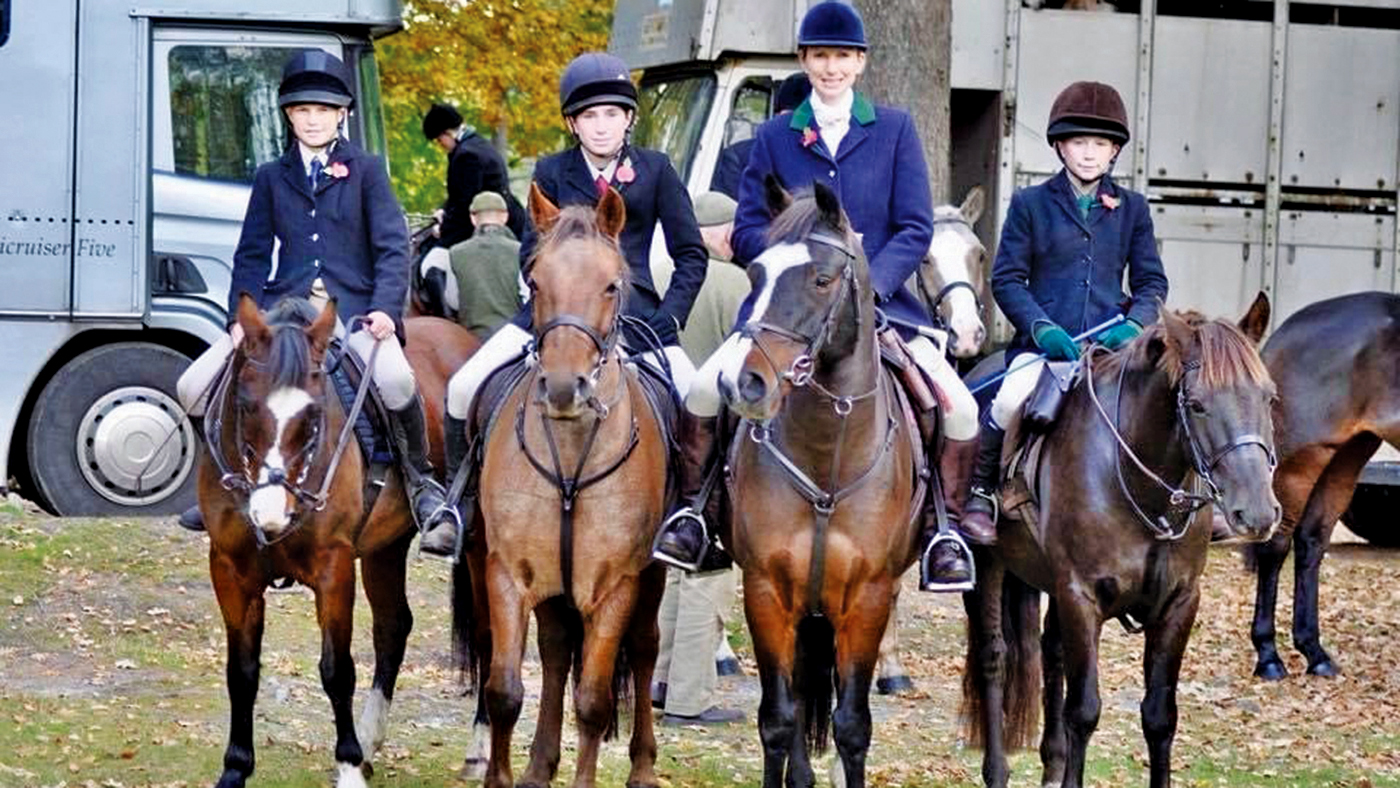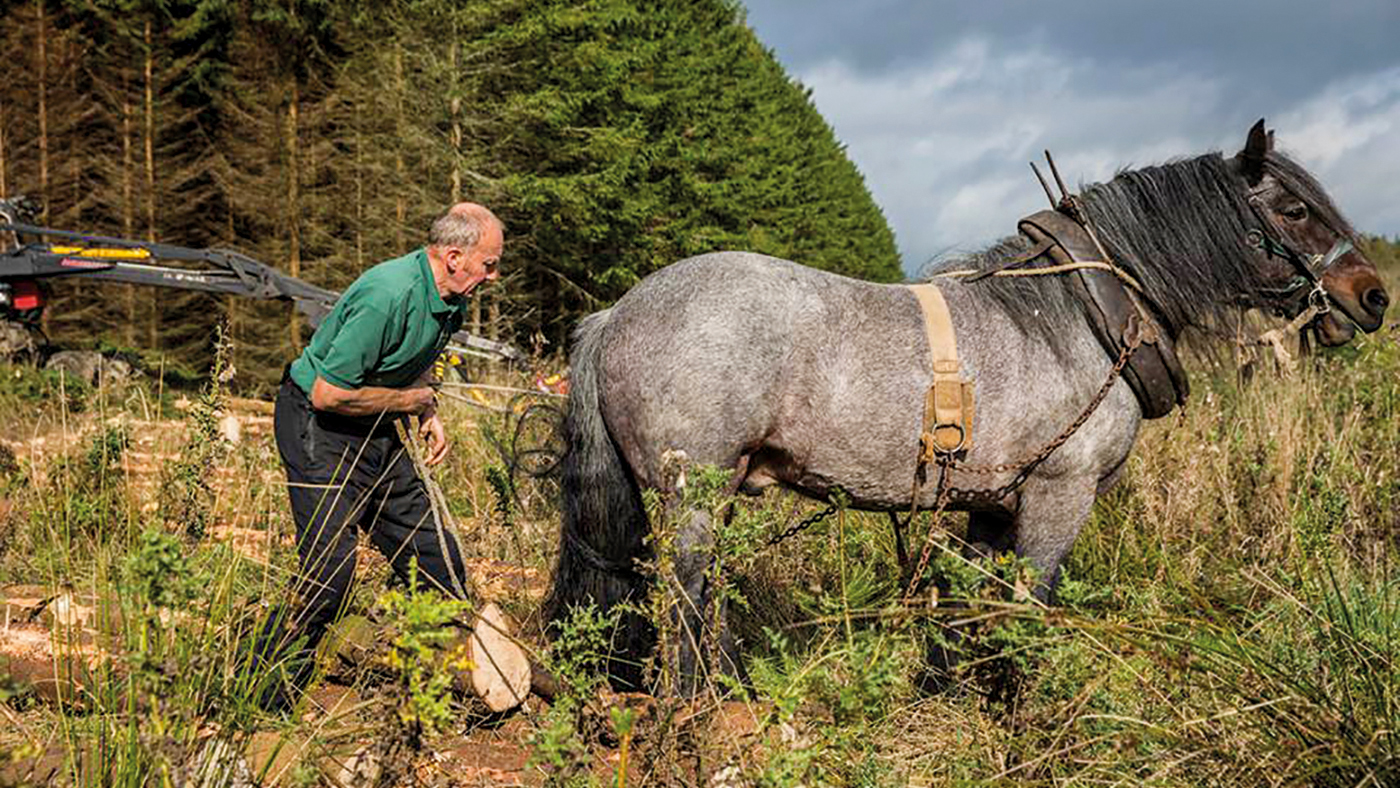Turning natives away for part of the year not only benefits their mental wellbeing, but also their overall health, discovers Stephanie Bateman
THE idea of turning a beloved pony out with no rug and no feed through the winter months after a busy season being ridden fills most owners with dread, but some say it’s one of the best things you can do for them.
New Forest pony breeder Erika Dovey has seen first-hand from watching her father and grandfather the benefits of allowing ponies to live in their natural habitat.
“One of the many skills I was taught as a commoner was how to use the forest to your advantage, so if we have a pony that is doing too well, we turn it out on the forest and it naturally loses weight,” says Erika, who runs Carterstone Stud.
Most of Erika’s ponies are born on the forest, so learn where and what to eat and drink from their mothers. They spend the first few months running with their dams before being brought into Erika’s holding in the autumn to be weaned and handled through the winter. They are then turned back out the following spring when the grass starts growing and left alone until December when they return for more handling.
Erika shows many of them in-hand as youngsters before breaking them in at four and competing them in working hunter classes as well as hunting them.
“By grazing them that way, you are keeping them in really good shape and not allowing them to get overweight,” she says. “They maintain muscle tone because they are foraging and walking, wading through bogs and stretching to eat leaves and bark.”
The forest also gives the younger ponies a great education.
“They see walkers, dogs, bikes and traffic, so when we come to break them in and ride them on the forest, they are used to it,” says Erika. “They are really sure-footed too as they negotiate a variety of terrain as well as bridges, water and ditches. We train them through the winter to compete in the annual New Forest point-to-point which is a race through the forest on New Forest ponies.”

New Forest breeder Erika Dovey’s ponies are usually born in the forest as well as raised there, and they also show, compete and hunt
Erika clips her ponies out and shoes them through the winter, but once spring arrives, they are unrugged and shoes removed before being turned out.
“They are more than happy to come back in for their ridden work, because they have been given that opportunity to be themselves,” says Erika. “Their feet are pretty hard so they don’t need the farrier as often [as most horses], but we do worm them and treat for crab fly. They don’t get laminitis and it really improves their health overall. It’s a lovely way of life.”
ANOTHER stud that keeps ponies in their natural environment is Roandale Stud, run by Gina and Charlie Parker, who breed Dales ponies on their 1,200ft hill farm in Co Durham.
Charlie, a forester by trade, has used Dales ponies for logging for more than 30 years.
“He’s semi-retired, but still does small, local jobs alongside the breeding and tending to the sheep and cattle on the farm,” says Gina. “We like to promote the Dales ponies as more than just riding ponies which is why Charlie uses them for forestry work.”
Gina and Charlie breed between eight and 10 foals a year. The ponies live out all year round on the hillside of the farm’s 125 acres.
“They are proper hardy Dales ponies,” says Gina. “They don’t wear rugs and aren’t shod, and they only get hay if we are under snow. They are turned out in groups; each stallion has a few mares with him for company who will be in foal to him already, and the other mares are on a 52-acre allotment which is on the highest bit of the farm.”
The ponies are handled and shown as weanlings before being turned back out again. Charlie works the stallions when time allows, and uses gelding Rocky for forestry work.
“They get wormed and have their feet and teeth checked but aren’t handled much other than that, though you could still put a headcollar on and take them for a walk no trouble,” says Gina. “It’s the temperament that’s important. Not only do they have to be good enough to represent their breed in the ring, but they also have to be ridden and driven and do a job with the chain harrow if needed.”

Charlie Parker uses Dales pony Rocky – who lives out – for logging
Despite the expanse of ground the ponies have to roam, they manage their weights well.
“Because we’re so high up, the grass doesn’t grow that well, so it’s not lush,” explains Gina. “They get thin in the winter and that’s what native ponies should do. They find what they need – you see them eating rushes, thistles and gorse and nettles, and they’ll use the dry-stone walls and valleys for shelter. They are using senses that have been bred into them for millennia, and they do incredibly well by it.”
NOT everyone has access to hundreds of acres to turn their ponies out on to. Grace Troup of Rumach Highland Ponies in Lancashire breeds Highland ponies and uses local conservation grazing sites and nature reserves to turn her ponies out on.
“We work with the Lincolnshire Wildlife Trust and have 25 ponies on different locations including the beach, in the Wolds and on the moors,” says Grace. “We have mare and foal herds and a stallion and colt herd.”
Grace buys the ponies at weaning and handles them at home before running them in their herds until they are three. She then sends them to be backed and shown by Laura Maher until they are five before they are either sent for breeding or return to their grazing.
“They thrive in a natural environment and are always happy,” says Grace. “They live in Skegness on a reserve, or on the water meadows in the winter and the ancient dune system on the beach in the summer. Their enclosures are around 30 acres.”
Grace’s aim is to preserve the sadly dwindling genetics of the breed.
“If they don’t make the standard, we geld them and they are sold as riding horses, otherwise they are kept for breeding,” she says. “They’re turned out with no rugs and no shoes, and they are only fed hay if there is snow. They winter back [lose weight] well.”
The ponies are well known for their super temperaments and are happy to be fussed when they are checked once a day.
“The kids climb on the stallions in the field and ride them around with no problems,” says Grace. “They are content and calm and relaxed. Happy ponies are everything to us.”
Lindy Lumsden is another Highland enthusiast and winters out her 11-year-old Highland pony Crannog on a piece of hillside on her brother-in-law’s 65-acre Perthshire holding.
“He’s a leisure horse between March and September and is then turned away with a companion for the winter,” says Lindy.
Lindy’s choice of management came about mostly because of limited options.
“Where I live, there aren’t a lot of livery yards and I think he’d be miserable if he was only out for a few hours through the winter,” she says. “They love being out, even if the weather is bad. If it’s a west wind, they stand with their backs to a hawthorn bush, if it rains, they go into the woods and if it’s sunny they are at the top of the hill. You can tell what the weather is going to do by what they are doing.”
Lindy checks Crannog at least once a day in winter, but only to glance over him.
“I don’t groom him because I don’t want to strip his coat out,” she says. “The hill keeps him fit and muscled and I’ve never had to worry about mud fever. He naturally loses weight over the winter and is so relaxed and happy.”
IT’S not just leisure horses who benefit from being turned out. Exmoor specialist Juliet Rogers is a fan of turning her show ponies out on conservation grazing in winter.
“They come back from Horse of the Year Show [HOYS], and once they’ve had a bit of time with no rugs on at home, they go straight out on to conservation grazing for four months,” says Juliet, chairman of trustees of Moorland Mousie Exmoors.
The habitat they graze across Northumberland varies from site to site.
“My HOYS pony Barhill Danny and his pal Donny were grazing a water meadow last winter, which is reedy rough grassland used for breeding waders,” says Juliet. “They come off in February and go back when they have finished showing. They go feral very quickly.”
The ponies are shod to give them grip via studs when jumping, but their shoes and rugs are removed before they are turned away. Only the mares in foal are fed.
“They lose weight through the winter which is really important,” says Juliet. “We have some on the top of the Northumberland hills which is great for those that suffer from sweet itch because there are no flies up there.”
Juliet selects the ponies she wants handling and sends them to places where they will be handled like pet ponies.
“They have an amazing life,” says Juliet. “They are always happy to come in and it makes such a difference to their sparkle in the ring.”
“Keep them natural”
ONE of the most important benefits of turning ponies out over the winter is to enable their natural weight loss cycle, which prevents obesity and related metabolic conditions.
“Natives that are over-rugged, overfed and underworked are not following their natural metabolic cycle, and it causes serious health problems,” says Dales breeder Gina Parker. “You should be able to count their ribs in the spring to allow for the weight they put on over the summer.”
Gina feels that today’s horse owners have lost sight of what a native pony should be.
“If we’re not careful, a lot of the characteristics of the natives and their traits that make them hardy will be lost,” she says. “We’ll lose the ability to turn them out on a hillside and survive. Keep them natural with a good coat on and out as much as possible, and unless they have to be clipped for hunting or working, don’t rug them up.”
This feature can also be read in this week’s Horse & Hound magazine, on sale Thursday 6 May
You may also be interested in…

At home with native pony breeders Julian Walters and David Hodge

New in-hand championships to promote British breeds
Will you be looking to enter?

‘It just made me more hungry for the win’ — show producer Katy Marriott-Payne on setting two native breed records
“I always say that it takes three goes at Olympia before you even have any idea of how to do

Britain’s ‘critical’ native breeds fighting for survival *H&H Plus*
Five of Britain’s native breeds are on the critical list, fighting for their survival. Octavia Pollock explains why it’s worth


